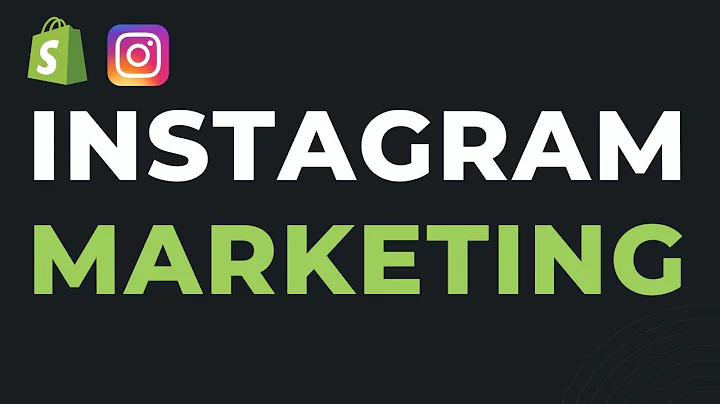Add Facebook Pixel to Shopify in Minutes
Table of Contents
- Introduction
- Logging into Shopify and Facebook
- Creating a new Facebook Page
- Setting up Facebook Meta
- Adding an Ad Account
- Setting Permissions and Managing Accounts
- Creating a Facebook Pixel
- Setting up the Pixel in Shopify
- Connecting Shopify and Facebook Meta
- Review and Completion
How to Add Facebook Pixel to Shopify
In this article, we will guide you step-by-step on how to add Facebook pixel to your Shopify store. Facebook pixel is a code snippet that helps you track conversions and retarget customers on Facebook. By integrating Facebook pixel with your Shopify store, you can gain valuable insights into your advertising campaigns and optimize your marketing strategies.
1. Introduction
Before we begin, let's understand what Facebook pixel is and why it is important for your Shopify store. Facebook pixel is a powerful tool that allows you to track and measure the effectiveness of your Facebook ads. It helps you understand your website visitors' behavior, target specific audiences, and optimize your marketing efforts based on real-time data.
2. Logging into Shopify and Facebook
To get started, log into your Shopify account and open a new tab to log into your Facebook account. Having both tabs open simultaneously will make the setup process more convenient.
3. Creating a new Facebook Page
In the Facebook tab, click on the "Pages" button located on the left-hand side of the page. Then, click on the "Create New Page" button to begin creating your Facebook page. Provide the necessary information such as page name, category, bio, and basic information. Once done, click on the "Create Page" button.
4. Setting up Facebook Meta
Open a new tab and access Facebook Meta. If you already have an account, log in. Otherwise, create a new account by providing your business and account name, business email, and clicking on submit. On the left side of the menu bar, click on "Add Accounts" under the "Accounts" tab, and then click on the "Add Accounts" button. A dropdown menu will appear, select "Create a New Ad Account."
5. Adding an Ad Account
A dialog box will appear asking for details such as account name, time zone, and currency. Fill in the necessary information and click on the "Next" button. Another dialog box will ask for the usage of the ad account, whether it's for your personal business or another business or client. Select the appropriate option and click on "Create."
6. Setting Permissions and Managing Accounts
Now, you need to select people and set permissions for managing and accessing your account. You can allow your own account to manage the ad account. Click on the "Manage Ad Account" button and then click the "Assign" button.
7. Creating a Facebook Pixel
Go back to your Meta page and click on "Data Sources" under the "Data Sources" tab. Then, click on "Pixels." A dialog box will appear, prompting you to name the pixel and enter your website URL. Provide the necessary information and proceed.
8. Setting up the Pixel in Shopify
Another dialog box will appear, asking if you want to continue managing your business or set up the pixel now. Click on the "Set up the pixel now" button. Then, click on "Add Code Using a Partner Integration" and select Shopify. You will be redirected to your Shopify store. In the Shopify admin, go to "Online Store" and click on "Preferences." Then, click on the "Setup Facebook" button and follow the prompts.
9. Connecting Shopify and Facebook Meta
Once you have completed the setup on Shopify, get back to your Meta page. It will ask you to connect your Shopify account. Checkmark the box indicating that you have completed the setup on Shopify and click on the "Next" button. Enter the URL of your Shopify store and click on "Send Best Traffic." Follow the remaining prompts until the setup is complete.
10. Review and Completion
After completing the setup, review the settings and configurations to ensure everything is correct. Make any necessary adjustments. Once you are satisfied, click the "Finish" button.
Congratulations! You have successfully added Facebook pixel to your Shopify store. Now you can track your website visitors, optimize your ads, and improve your overall marketing performance. If you found this article helpful, please like and subscribe to our channel. Thank you for watching!
Highlights
- Learn how to add Facebook pixel to your Shopify store
- Track conversions and retarget customers on Facebook
- Gain insights into your advertising campaigns
- Optimize marketing strategies based on real-time data
- Step-by-step guide for seamless integration
FAQ
Q: What is Facebook pixel?
A: Facebook pixel is a code snippet that helps you track conversions and retarget customers on Facebook.
Q: Why is Facebook pixel important for Shopify stores?
A: Facebook pixel provides valuable insights into your advertising campaigns, helps understand visitor behavior, and allows you to optimize your marketing efforts based on data.
Q: Can I use Facebook pixel on any e-commerce platform other than Shopify?
A: Yes, Facebook pixel can be integrated with various e-commerce platforms, including Shopify, WooCommerce, Magento, and more.






















